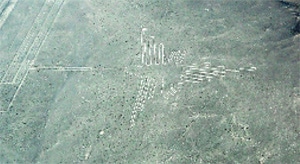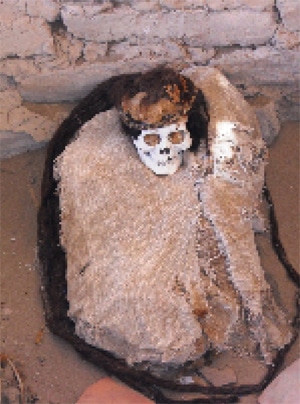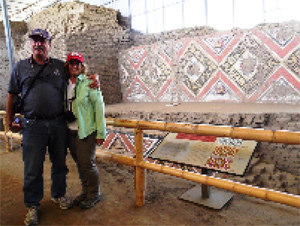Updated 6/30/11
By Cheryl Pruss
Full Disclosure, Altitude Sickness affects 60 % of visitors!
All of the areas I have discussed in previous articles are at high altitudes: Cuzco is at 11,000 ft, Macchu Picchu is lower at 8,000 ft, mountain passes we crossed were at 16,000 ft and Lake Titicaca is over 12,500 ft. We knew this going in and took Ginkgo Biloba to prevent altitude sickness. We also planned our trip to minimize the impact of high altitude. The good news: we had no problems with shortness of breath or headaches. The bad news: I was unable to hold down the food of any kind other than chicken broth and water for the whole 18 days we were at high altitude. Wanting to celebrate my birthday and our anniversary, I tried to eat, but invariably I was unable to keep the food down. Even worse, we were staying at fabulous hotels with great food included in the price we were paying. I did still hike and visit everything I wanted to visit, but I didn’t have much energy, which is why at several points my story includes me sitting at a site, while my husband hiked a little higher. I visited a clinic in Cuzco because we were going to higher elevations and I was worried that maybe I shouldn’t go. I was found to be extremely dehydrated and received 12 hours of IV rehydration. I was able to continue the next morning.
South of Lima, to the Nazca Lines, and the Ballestas Islands
 The Nazca lines are located several hundreds of miles south of Lima, the capital. Here you can see images of the desert that were created centuries ago by indigenous people. The images are very large and can only be seen from a plane. How the images were created is a mystery since the people who created them would have had to be above the desert floor to see the whole image. When you observe the lines that make up the images, up close, on the ground, it looks like the rocks have simply been removed and stacked to the side and the exposed desert dirt is what the lines are made of. We saw 12 images from our plane including a monkey, a spaceman, a hummingbird, a parrot, a spiral and others. Our plane had been in service for 2 weeks and it felt very safe. We loved the experience of seeing the lines from the air.
The Nazca lines are located several hundreds of miles south of Lima, the capital. Here you can see images of the desert that were created centuries ago by indigenous people. The images are very large and can only be seen from a plane. How the images were created is a mystery since the people who created them would have had to be above the desert floor to see the whole image. When you observe the lines that make up the images, up close, on the ground, it looks like the rocks have simply been removed and stacked to the side and the exposed desert dirt is what the lines are made of. We saw 12 images from our plane including a monkey, a spaceman, a hummingbird, a parrot, a spiral and others. Our plane had been in service for 2 weeks and it felt very safe. We loved the experience of seeing the lines from the air.
We had read about the Chauchilla cemetery, outside of Nazca, and the Antonini museum in Nazca, and decided to book a quick tour through our hotel. We were delighted when we met our tour guide, who introduced himself as the only archaeologist who is a tour guide in Nazca. The cemetery was found by grave robbers and ransacked in the 1980s. Now, the graves and skeletons have been put back, and everything is well-preserved, due to the hot, dry weather and almost no rain. The open graves contain skeletons/mummies, with textiles like headbands and blankets that are still intact. Some of the mummies have long, dread lock-like hair. The museum had well-preserved pottery, textiles, and musical instruments found in and around Nazca.
 Our guide told us that he was on the computer two hours a day, using Google Earth to look for undiscovered Nazca lines which would lead him to further discoveries. He is convinced that he will discover tools in an ancient site that will explain the mystery of how the Nazca line images were made without the people being elevated in balloons or spacecraft as some people think. Joe showed him his Android phone, with the GPS app showing our current location. Our guide was really interested in this mobile capability, and in just a few minutes showed us some undiscovered “Nazca lines” on Google Earth on the Android phone.
Our guide told us that he was on the computer two hours a day, using Google Earth to look for undiscovered Nazca lines which would lead him to further discoveries. He is convinced that he will discover tools in an ancient site that will explain the mystery of how the Nazca line images were made without the people being elevated in balloons or spacecraft as some people think. Joe showed him his Android phone, with the GPS app showing our current location. Our guide was really interested in this mobile capability, and in just a few minutes showed us some undiscovered “Nazca lines” on Google Earth on the Android phone.
The Ballestas Islands are off Paracas, a nice (desert) beach town, about 2 hours North of Nazca. The Ballestas Islands are known as a “mini Galapagos”. After a short boat ride, we observed lots of female, babies and some male sea lions, a wide variety of birds, nests, chicks in nests, AND penguins! Our small boat took us to small coves where we were able to see it all up close.
North of Lima, Trujillo
 We planned on going to two cities north of Lima, Chiclayo, and Trujillo, to see ruins. Unfortunately, our bus coming back from Paracas was late getting into Lima and we missed our flight to Chiclayo. Luckily in Lima, there is an airport hotel on the airport
We planned on going to two cities north of Lima, Chiclayo, and Trujillo, to see ruins. Unfortunately, our bus coming back from Paracas was late getting into Lima and we missed our flight to Chiclayo. Luckily in Lima, there is an airport hotel on the airport
property, so we were able to spend the night right there and leave the next morning for Trujillo. Trujillo is a nice town with about 800,000 people. There is a walking street downtown near the Plaza de Armas
with several good restaurants, banks, and lots of
stores. Outside of town is the Chan Chan ruins of the Chimu culture, built around 850 AD, and spread out across the desert, coming within 500 meters of the ocean on the west side. Adobe was widely used in these ruins, with lattice-like short walls. We then visited the Huaca de Luna and Huaca del Sol ruins (of the Moche Culture) where there were some areas that had been fully restored and some areas where no restoration had been done at all. The areas of no restoration were the most interesting with the original colors and images still obvious.
Lima
Lima was our last stop, where we stayed five nights before leaving the country. It is a city of nine million people. Our guidebooks and other travelers had told us we could get any souvenirs that we wanted in Lima and that all the ones we saw in the rest of the country would be here at good prices. Except for only small pieces like the rock from Maria, we had purchased very little prior to arriving in Lima as we needed to travel light – on small planes, buses and taxis. We used our time in Lima at souvenir shops, purchase a lot of nice textiles, eat at great restaurants and explore Miraflores, San Isidro, and Barranco. We rented an apartment with an ocean view, found on Craig’s list in Lima, in a great area of Miraflores, for less than a hotel would cost. We enjoyed our quiet time here before we said goodbye (for now) to Peru. We will return. Peru is an incredible country.
